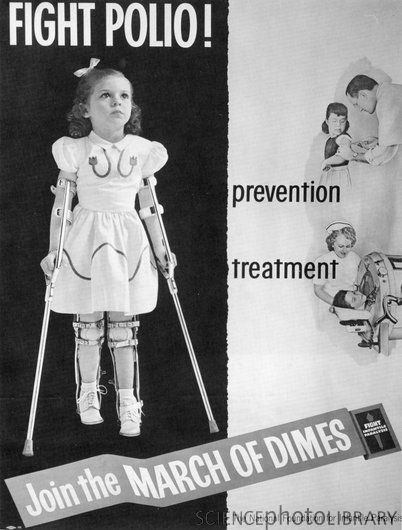Polio (1958-1961)
Stamp Out Paralytic Polio
Although new horrors like AIDS have emerged, other diseases, such as polio, have all but disappeared in the United States. Advertising helped make this possible. Polio is a viral disease that damages the nervous system, and often results in paralysis and, sometimes, even death. In 1916, polio killed 6,000 people and paralyzed another 27,000 in the United States alone. During the 1940s and 1950s, polio was a household word and, undoubtedly, a source of intense fear for many parents.
The paralytic polio vaccine developed by Jonas E. Salk in 1955 made it possible to prevent polio. When the country responded very slowly to the medical advancement, The U.S. Public Health Service, the American Medical Association, and the National Foundation for Infantile Paralysis sought the Ad Council’s help to persuade all Americans under forty to get the vaccine.
Three sets of shots were required at first, and it took an extended and repeated advertising effort to get 80% of the at-risk population fully immunized. When 1959 statistics showed a discouraging rise in polio cases among those who had not taken the full series of Salk shots, the Ad Council renewed its campaign to persuade Americans to obtain all three of the necessary polio shots. Through April of 1960, inoculations had increased to 91.1 million, from 79 million the previous year, and 72 million Americans had received three or more shots.
The importance of the polio vaccine was successfully communicated and the following year the campaign was discontinued. Today, polio is one of the routine immunizations given to children in the United States and, as a result, the disease is virtually nonexistent.
Print Ad:
Fight Polio!







